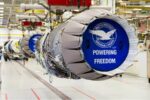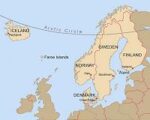North Korea has reportedly conducted its first live-fire test of an artificial intelligence (AI)-enabled combat drone, marking a significant milestone in the country’s pursuit of advanced unmanned warfare capabilities. The demonstration suggests Pyongyang is seeking to close the technological gap with global powers by integrating autonomy and machine learning into its aerial combat systems.
Live-Fire Demonstration Signals Doctrinal Evolution
According to North Korean state media and corroborated by South Korean military sources cited by Yonhap News and NK News, the Korean People’s Army Air and Anti-Air Force (KPAAF) conducted a live test of what it described as an “AI-powered unmanned combat aerial vehicle” (UCAV) on September 24th. The event was reportedly overseen by senior military officials and featured simulated strike missions against mock enemy targets.
The UCAV demonstrated autonomous target acquisition and engagement using onboard sensors and what North Korean media claimed was a “domestically developed neural network system.” While no independent verification of the system’s AI sophistication is available, satellite imagery reviewed by defense analysts at 38 North showed increased activity at the Panghyon airbase consistent with UAV testing operations.
This marks a doctrinal shift for North Korea’s military aviation strategy. Historically reliant on aging manned platforms such as MiG-21s and Su-25s, Pyongyang appears to be investing in asymmetric force multipliers like drones to offset its conventional limitations.
Design Characteristics Suggest Iranian or Chinese Influence
Imagery released by North Korean outlets shows a fixed-wing drone with mid-mounted straight wings, twin tail fins in V configuration, and ventral air intake—features reminiscent of Iran’s Shahed-129 or China’s Wing Loong I. Analysts at the Center for Strategic and International Studies (CSIS) note that the platform likely draws from foreign UAV designs acquired via illicit channels or reverse engineering.
Estimated specifications based on visual analysis include:
- Wingspan: ~14 meters
- Endurance: Estimated 12–18 hours
- Payload capacity: ~200–300 kg
- Sensors: EO/IR turret under nose; possible synthetic aperture radar (SAR)
- Weapons: Two hardpoints visible; likely capable of carrying guided munitions or loitering munitions
The inclusion of an EO/IR sensor suite suggests ISR roles alongside strike capability. However, claims of full autonomy remain unverified. It is more plausible that current iterations operate semi-autonomously with human-in-the-loop targeting protocols—similar to early Turkish Bayraktar TB2 deployments.
AI Integration Raises Questions About Capabilities—and Ethics
The most contentious claim revolves around the use of artificial intelligence for real-time decision-making. North Korean media stated that the drone used “deep learning algorithms” to identify targets without human input during portions of its mission profile. If true—and if not exaggerated—this would place DPRK among a small group of nations experimenting with lethal autonomous weapons systems (LAWS).
This development raises several concerns:
- Reliability: Without access to robust datasets or computing infrastructure, it is unclear how effective North Korea’s AI models can be in contested environments.
- Spoofing vulnerability: Autonomy increases exposure to electronic warfare tactics such as GNSS spoofing or datalink jamming—a domain where South Korea excels.
- Lethal autonomy norms: The use of fully autonomous weapons remains controversial under international humanitarian law frameworks. No evidence suggests DPRK adheres to any such norms or constraints.
A report from RAND Corporation notes that even advanced militaries struggle with reliable real-world deployment of AI-enabled drones due to edge-case failures and adversarial deception risks—challenges likely magnified for Pyongyang given its limited R&D base.
DPRK Drone Programs Accelerating Despite Sanctions
This test follows a series of developments indicating rapid expansion in North Korea’s UAV arsenal:
- July 2023: Two suspected reconnaissance drones briefly entered South Korean airspace before being intercepted near Seoul.
- October 2024: Satellite imagery revealed construction of new UAV hangars at Sunchon Air Base.
- January–May 2025: Multiple short-range kamikaze drones were observed during tactical exercises near the DMZ.
The proliferation aligns with Kim Jong-un’s January 2021 directive emphasizing “unmanned strike capability” as a national priority. Despite export controls under UN sanctions regimes (notably UNSCRs 2371 & 2397), components such as microprocessors and composite materials continue reaching DPRK via front companies operating out of Southeast Asia and Africa according to UN Panel of Experts reports from late 2024.
Tactical Implications for South Korea and U.S. Forces
The emergence of AI-enabled UCAVs could complicate air defense planning on the peninsula. While South Korea fields layered defenses—including KAMD assets like KM-SAM Block II (“Cheongung II”) and L-SAM interceptors—low-RCS drones flying at low altitude present persistent detection challenges for radar-based systems alone.
If deployed en masse or used in coordinated swarms alongside decoys or jammers—as seen in Iranian attacks on Saudi oil infrastructure—the new UCAVs could saturate defenses during crisis scenarios. Moreover, their potential use against naval assets near disputed maritime boundaries adds another vector requiring counter-UAS integration into KDX destroyers’ Aegis suites or ROK Navy CIWS upgrades like Phalanx Block IB Baseline 2 enhancements.
A New Era—or Just Propaganda?
Caution is warranted when interpreting DPRK military announcements due to their history of exaggeration for strategic messaging purposes. However, even if current capabilities fall short of true autonomy or precision strike parity with NATO-class systems, North Korea’s intent is clear: it aims to reshape battlefield dynamics through asymmetric tech leverage—especially where conventional parity is unattainable.
If further tests confirm swarm coordination or improved C4ISR integration across unmanned platforms—including recent sightings of long-endurance ISR drones over East Sea—it may signal not just technological evolution but operational doctrine shifts within KPAAF planning cycles toward distributed lethality models akin to PLA concepts like “intelligentized warfare.”









